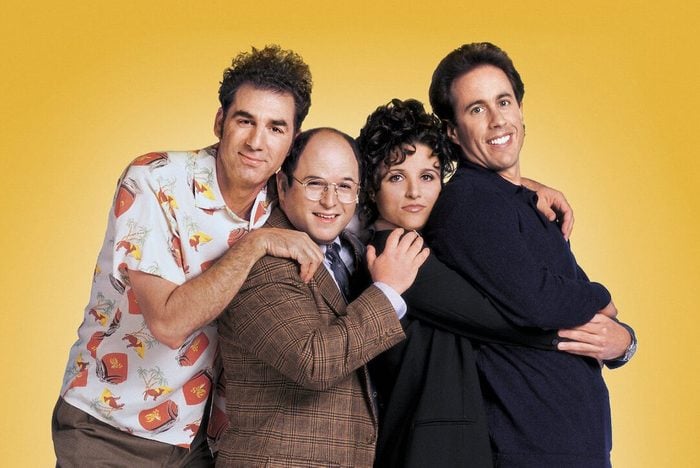 via netflix.com
via netflix.com
Seinfeld (1989–1998)
This show about nothing made audiences feel a whole lot of something. Widely regarded as one of the best 90s sitcoms of all time (and the funniest shows in television history), Seinfeld helped NBC rule Thursday nights for years— and took home 10 Primetime Emmys.
Grounded in Jerry Seinfeld’s standup, Larry David’s cynicism and sarcasm, plus a single-in-New-York-City state of mind, the must-see TV chronicled the daily concerns, calamities and complaints of Jerry (Seinfeld), overworked Elaine (Julia Louis-Dreyfus), curmudgeon George (Jason Alexander) and Kramer, a crazy neighbor who disregarded personal space (Michael Richards).
The show spawned numerous knockoffs and had such a widespread impact on pop culture that Jerry’s puffy white pirate shirt is on display at the Smithsonian National Museum of American History.
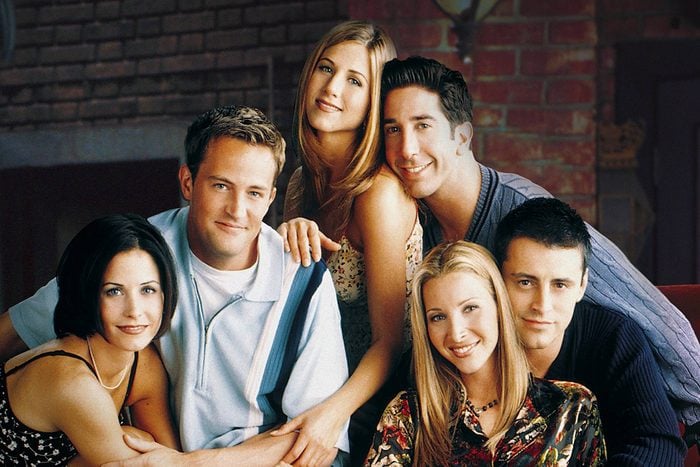 Via amazon.com
Via amazon.com
Friends (1994–2004)
Quick, name a scripted comedy that influenced pop culture, style, the vernacular and real life more than Friends? This era-defining tale of six Gen-X singles living, loving and hogging the couch at an NYC coffee shop had complete cultural saturation. The Rachel-haircut craze lasted for years, people nailed frames around their peepholes and they still echo catchphrases like “We were on a break!” and “How you doin’?”
Within its first year, the six stars (Jennifer Aniston, Courteney Cox, David Schwimmer, Matthew Perry, Matt LeBlanc and Lisa Kudrow) rose to the top of the A-list, and they’ve all stayed there ever since. (And if you have your own tight-knit circle, you may want to share these books about friendship with them.)
The show nabbed 64 Emmy nominations and won six. Reruns, streaming and a reunion show have lured younger generations into the fold and made them just as obsessed with the Rachel and Ross “will-they-or-won’t-they?” as those of us who watched it in real time. Also, don’t forget to check out these favorite Friends quotes that couldn’t be any funnier.
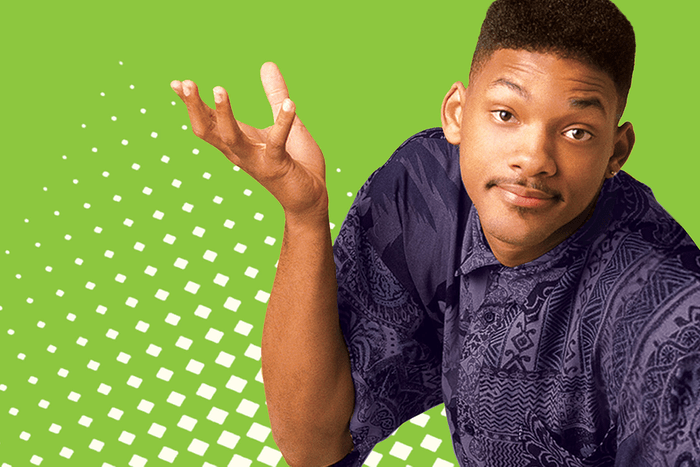 Via Hulu.com
Via Hulu.com
The Fresh Prince of Bel-Air (1990–1996)
Long before Oscar winner Will Smith was involved in a controversial awards show scandal, he won the first Best Rap Performance Grammy alongside his partner DJ Jazzy Jeff in 1989. Then, someone very smart tailored a sitcom around the charismatic 21-year-old from West Philadelphia—even cribbing biographical bits and pieces from his life.
The winning mash-up of hilarity, heart and hip-hop resulted in a huge hit for NBC, had a memorable theme song, made Smith a household name and paved the way for his ascension to superstardom. The Fresh Prince of Bel-Air presented a strong, loving and prosperous Black family and touched on important social and cultural issues like drunk driving, police violence and absentee fathers. (And let’s not forget about the now GIF-worthy scenes of Carlton doing The Carlton.) It paved the way for future shows like Everybody Hates Chris and Black-ish, and it was even reimagined as a 2022 drama for Peacock.
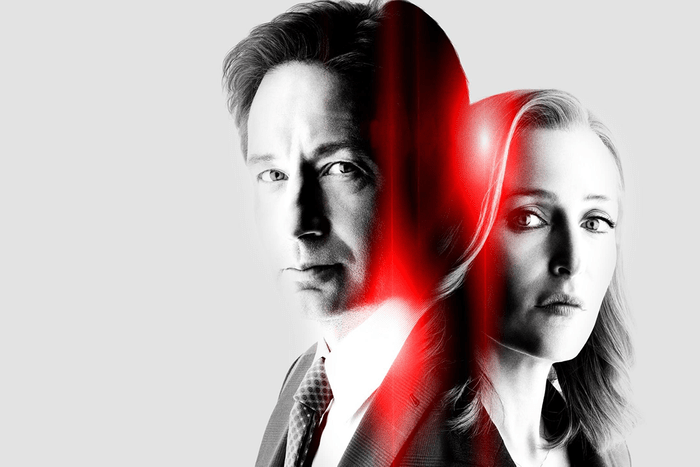 Via Hulu.com
Via Hulu.com
The X-Files (1993–2018)
The truth is out there: The X-Files is easily one of the best ’90s TV shows—especially if you self-identify as a sci-fi geek. Chris Carter and his staple of writers cleverly intertwined mythology-building chapters about cigarette-smoking men, aliens and government conspiracies with stand-alone monster-of-the-week episodes.
They also jumped around between genres, giving some episodes more humor, others more horror, and even satisfied shippers rooting for a workplace romance between Mulder and Scully (David Duchovny and Gillian Anderson). It spawned movies, spinoff shows, a video game and a crazy amount of collectible merchandise. The iconic agents are still a popular idea for couples Halloween costumes, and the franchise fostered a fan base so loyal that, even after a nearly 15-year absence from television, a couple of revival seasons scored the same kind of ratings the sci-fi show nabbed in its prime.
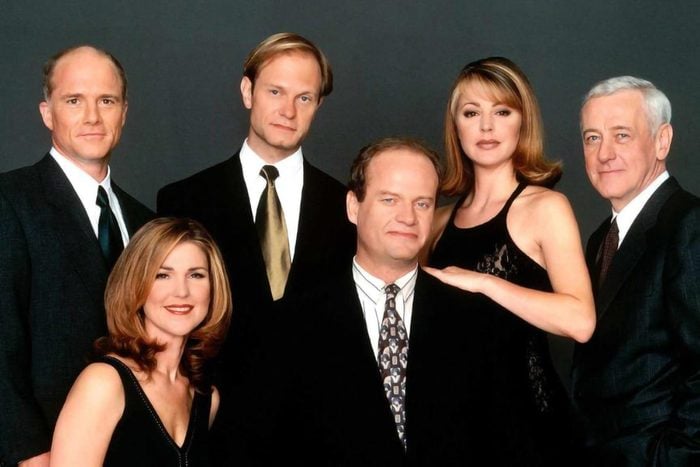 Via Hulu.com
Via Hulu.com
Frasier (1993–2004)
It shouldn’t be surprising that Frasier ran for 11 seasons, won a total of 37 Emmys and became one of the most critically beloved TV shows of all time, as it was a wildly successful spin-off of a wildly popular ’80s show—Cheers. Dr. Frasier Crane (the pitch-perfect Kelsey Grammer) led as a psychiatrist-turned-radio advice show host who had endless hijinks with his family and friends.
Gone was the working-class pub vibe, and the Seattle-based show was more self-aware, reflective and highbrow. It told the story of two competitive brothers who were always trying to process their limitations and sibling rivalry. David Hyde Pierce starred as Dr. Niles Crane, a role created for him, and he was the yin to Grammer’s yang, striking the chord between pretentious, fussy and obsessive-compulsive. It was written intelligently, but sometimes the wordplay and joke references were so highbrow (Freud, classical composers, Copernicus, particle accelerators) you might as well have been watching Netflix Korean dramas.
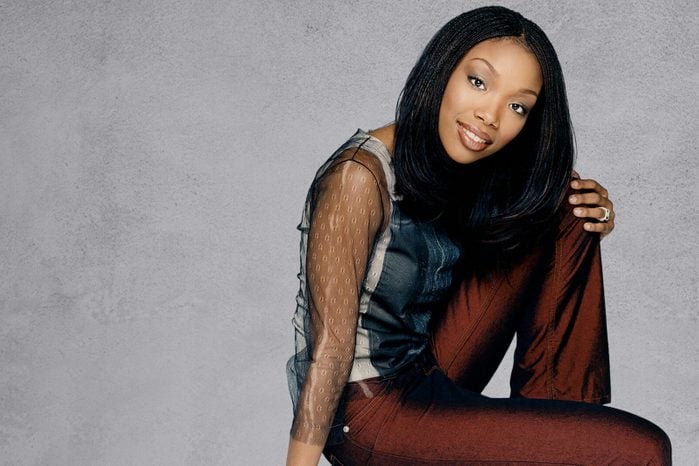 via netflix.com
via netflix.com
Moesha (1996–2001)
Singer Brandy Norwood was not the first Black teen to light up the small screen. But she put the life and times of a headstrong, outspoken and stylish female high school student of color at the center of a show. Moesha was set in a historically upper-middle-class Black neighborhood in Los Angeles and highlighted her and her classmates’ experiences with social issues like premarital sex, race relations, gender inequality and peer pressure.
Conscious authentic choices made by the creators—she wore braids, for example—and aspirational costumes (she wore Christian Louboutins a couple years before Carrie Bradshaw made the red soles famous) were part of the appeal. The show also hired trending musicians as guest stars. Moesha was rewarded with awards from the NAACP and the Parents Television Council. For more Black girl magic, try one of these books by Black authors.
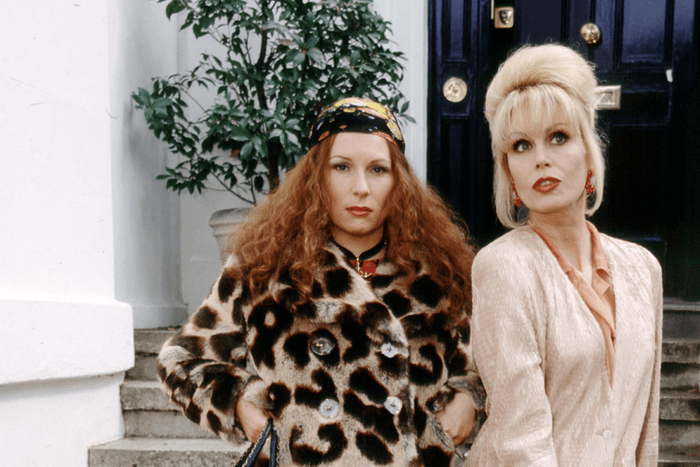 via hulu.com
via hulu.com
Absolutely Fabulous (1992–2012)
Bawdy, brash and unapologetic about being either, AbFab is the brilliant brainchild of the British comedy duo of Dawn French and Jennifer Saunders. Saunders also starred as PR exec Edina “Eddy” Monsoon, bestie to Joanna Lumley’s Bond Girl-turned-magazine exec Patsy “Pats” Stone.
A whirlwind of cleavage, champagne and caustic humor, the show also featured Eddy’s buttoned-up conservative daughter Saffron (Julia Sawalha), her judgmental mum (June Whitfield) and ditzy assistant Bubble (the amazing Jane Horrocks). Eddy and Pats were in a constant search for a good time, and when they found it, they handled it through raucous slapstick, play-it-cool vibes, profanity and quick-witted acerbity. They never wavered in their devotion to each other, and it’s always rewarding to see solid female friendships on TV.
 via hbomax.com
via hbomax.com
Sex and the City (1998–2004)
Based on a book of essays and columns written by Candace Bushnell, Sex and the City was a glamorous, wry snapshot of 30-something single-womanhood in New York—and it was nothing short of a revolution. Carrie, Samantha, Charlotte and Miranda (yes, we all thought we were just like one of them) spoke about bedroom antics freely, funnily—and most important—without shame. They also got to banter about other taboo subjects like abortion, career ambition, pregnancy, menopause, gay marriage and not wanting children.
The feisty foursome wasn’t the first gaggle of gals to make a splash in prime time, but they boldly took up the mantle once carried by Designing Women and The Golden Girls. Was there anyone who didn’t want to have Carrie’s wardrobe or Samantha’s confidence? A reboot, And Just Like That, now airs on HBO Max, and it’s all but guaranteed that today’s TV landscape wouldn’t have shows like Insecure, Glow, The Bold Type, Girls, Pivoting and Big Little Lies if Sex hadn’t been good for so long.
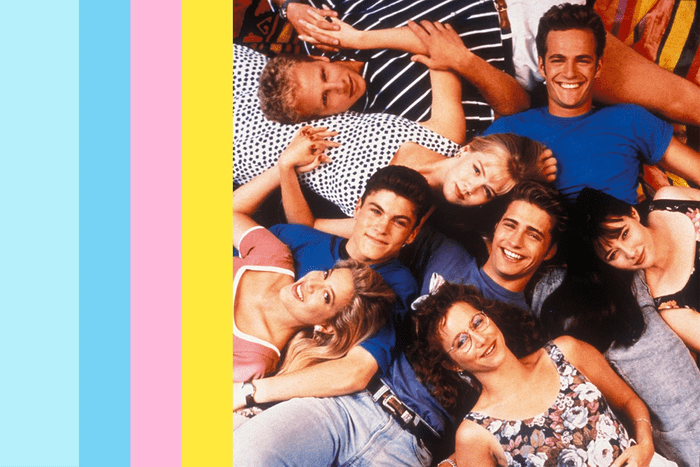 Via Hulu.com
Via Hulu.com
Beverly Hills, 90210 (1990–2000)
It’s hard to remember a time when the daily escapades of high school students weren’t crowding every corner of the pop-culture universe. You just have to look at how many YA novels top the bestseller list and get adapted into movies or TV shows these days, or think about Netflix’s puberty-dominated slate of original programming. Beverly Hills, 90210 was one of the pioneers of this phenomenon. When Brandon and Brenda moved to the monied zip code from the Midwest, they dove headfirst into the drama that followed their new (very pretty) circle of friends.
In the ’90s, fledgling network Fox gambled on a new kind of teen template from Darren Star and Aaron Spelling. That turned out to be a safe bet, as the show logged 293 episodes and made stars out of Luke Perry, Jason Priestley and Shannon Doherty. The show’s monster following continued to tune in after Donna Martin graduated, the kids went to college, and Steve and Dylan opened the Peach Pit After Dark.
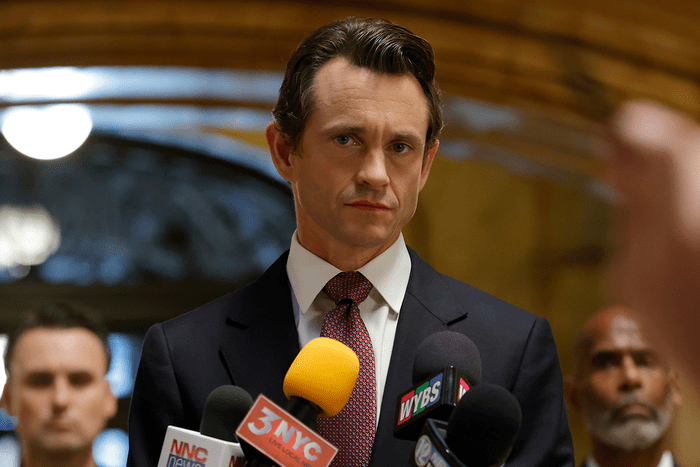 via peacocktv.com
via peacocktv.com
Law & Order (1990–2010; 2022)
Dick Wolf’s police/legal procedural hybrid changed the crime-show game forever, thanks to its unique concept. It follows both the cops that investigate a crime and the district attorneys who prosecute the cases—and its ripped-from-the-headlines plots. (If that aspect appeals to you, try these fantastic true-crime documentaries.) The OG member of the L&O juggernaut had an initial 20-year run, won six Emmys including Best Drama Series in 1997, launched countless careers including those of Chris Noth, Angie Harmon and Jill Hennessy while cementing the legacies of others like S. Epatha Merkerson, Benjamin Bratt and Jerry Orbach. Reruns continue to draw good ratings, and it is still so relevant and beloved that it was rebooted in 2022 with many players returning to reprise their roles.
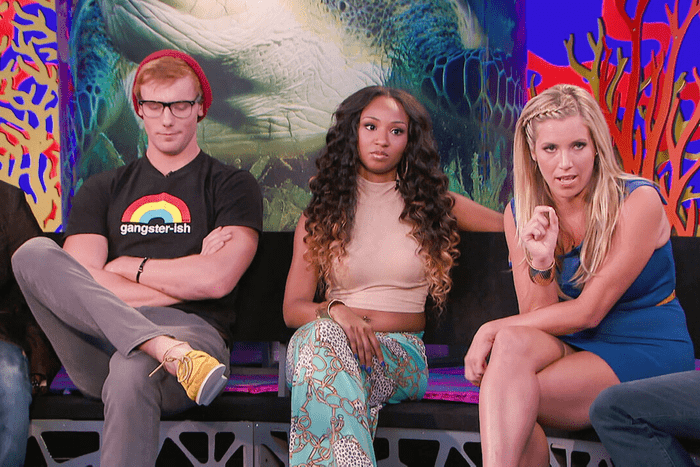 Via Netflix.com
Via Netflix.com
The Real World (1992–2019)
These days, network TV, basic cable and streamers are littered with reality shows that follow rich housewives, naked survivalists, aspiring chefs, duck hunters, pregnant teens and desperate singles looking for spouses. This was certainly not the case 30 years ago. All that changed when MTV first aired The Real World and invited seven disparate strangers to move in together in New York.
It began as a fascinating social experiment where people of different colors, sexualities, faiths and economic statuses debated both their beliefs—and who should do the dishes. The series went on to take place in other cities, including an emotional third season in San Francisco with AIDS activist Pedro Zamora.
Spanning almost three decades and 33 seasons, it gave attention-seekers who craved fame an outlet in the era before social media indulged our every voyeuristic urge. It became the model on which almost every unscripted series since has been based—or at the very least, pilfered from.
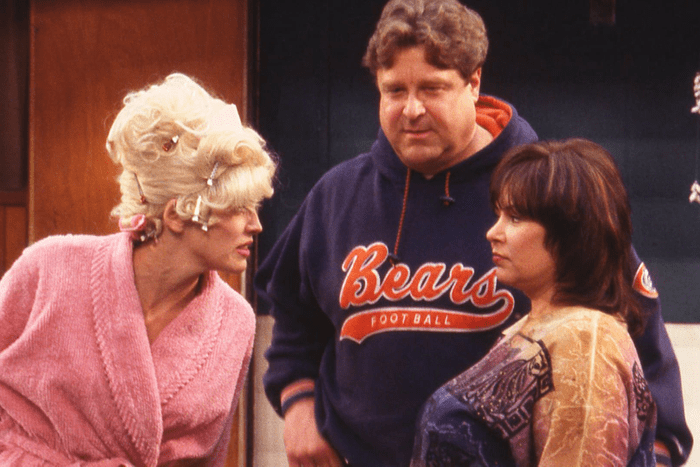 via peacocktv.com
via peacocktv.com
Roseanne (1988–1997; 2018)
It’s was funny because it was true. This sitcom about a Midwestern working-class family with constant money struggles, family squabbles, rowdy children and a strong-willed and sarcastic matriarch without a filter hit a nerve with a good portion of America that hadn’t felt represented on TV before.
Roseanne was a riff on Roseanne Barr’s domestic-goddess standup persona. The Conners—which included epic supporting actors Laurie Metcalf and John Goodman—weren’t fancy, classy or subdued, like most other boob-tube clans. They were lazy, loud junk-food addicts who would have scoffed at participation-ribbon helicopter parenting. They dared to broach subject matters rarely touched on in ’90s TV shows, let alone prime-time comedies, including domestic abuse, unemployment, heart attacks and preemies. There was also a fair share of behind-the-scenes drama—not to mention Barr’s public controversies.
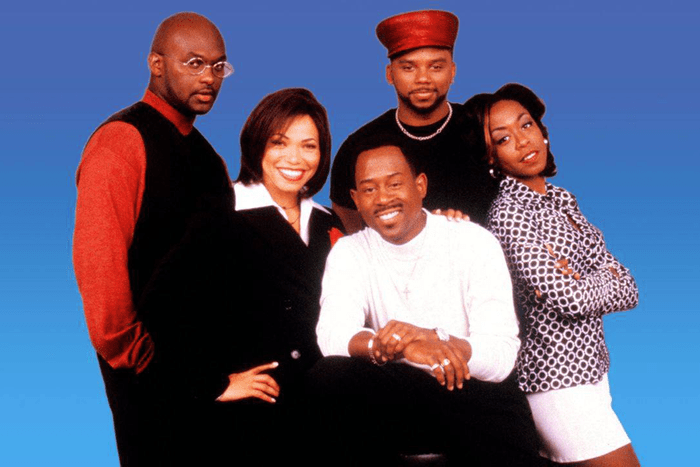 via hbomax.com
via hbomax.com
Martin (1992–1997)
Primetime network TV was still a fairly white and suburban place in the early ’90s. But the success of Martin Lawrence’s urban comedy about a sassy and opinionated Detroit radio DJ, his girlfriend (Tisha Campbell), her bestie (Pam) and his boys Tommy and Cole helped spark more diverse future lineups at competing networks. In fact, Monday night’s lineup at UPN, and to a certain extent the entire comedy slate at the then-new network, contained many of the best ’90s Black TV shows of all time.
Even the detail that Lawrence’s show and character were named after him—something enjoyed by many White comics of the decade, like Ellen DeGeneres, Roseanne Barr and Jerry Seinfeld—was huge in terms of representation. Over its five-year run, Martin won several NAACP Image Awards, nabbed a People’s Choice Award for Favorite New Comedy Series its freshman year and made Lawrence a household name and highly paid movie star.
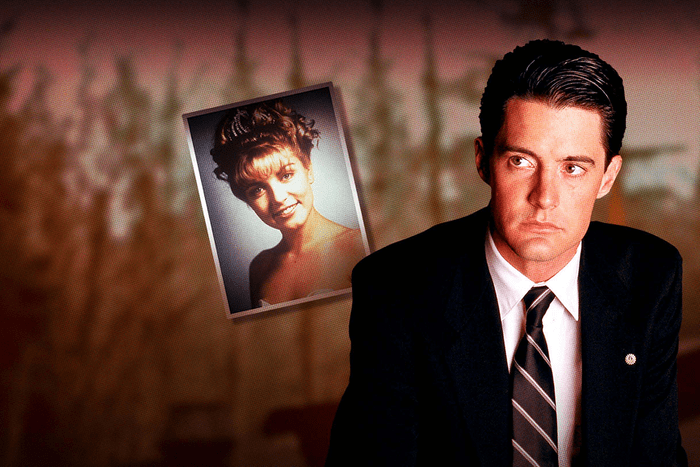 via paramountplus.com
via paramountplus.com
Twin Peaks (1990–1991; 2017)
Twin Peaks blended soap opera, surrealism and supernatural horror to tell the story of a dead homecoming queen in a small and weird Pacific Northwest town. The idiosyncratic but cheerful FBI agent (Kyle MacLachlan) was always sent to investigate, and this cult classic from the twisted minds of David Lynch and Mark Frost left a forever imprint on the crime show and mystery genre, thanks to its unique formula.
The haunting soundtrack and creepy imagery of owls, giants, foggy forests, dancing dwarves, metaphysical lodges and an inter-dimensional entity that feeds on anguish named Bob provided nightmare fodder for years. It inspired total fan devotion and resulted in plaid and flannel fashion trends, book tie-ins, a movie, dedicated TP conventions—and ultimately one of the first fan-powered campaigns aimed at saving a show from premature cancellation. The campaign failed, until Showtime revived Twin Peaks in 2017.
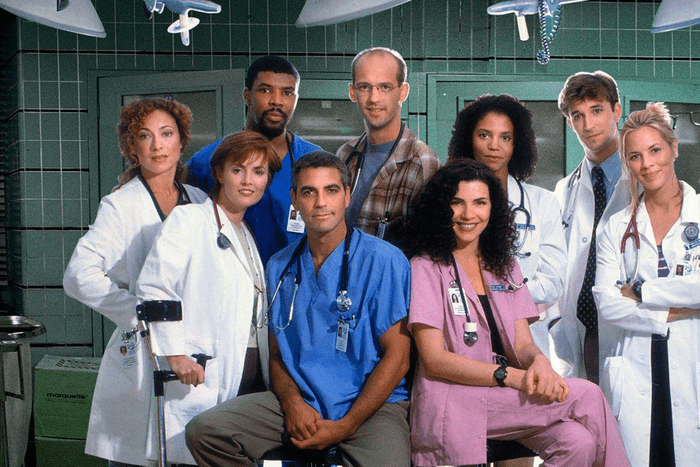 via hbomax.com
via hbomax.com
ER (1994–2009)
Without this groundbreaking medical drama set at Chicago’s County General, we might never have gotten later hospital-set hits like Grey’s Anatomy, House, New Amsterdam or The Good Doctor. We might also never have experienced the pleasure that is salt-and-peppered George Clooney as a leading man.
ER proved viewers were insatiable for well-written hour-longs that featured a top-notch revolving-door cast, including Julianna Margulies, Maura Tierney, Mekhi Phifer, Noah Wyle, Anthony Edwards and Ming-Na Wen. The show paid attention to details and hired consultants to get the medicine right, and the personal and professional lives of the staff constantly intermingled. The ratings and 23 Emmy wins earned them big budgets that made special effects and stunts possible, including one of TV’s most shocking moments—when Paul McCrane’s arm was sliced off by a helicopter rotor.
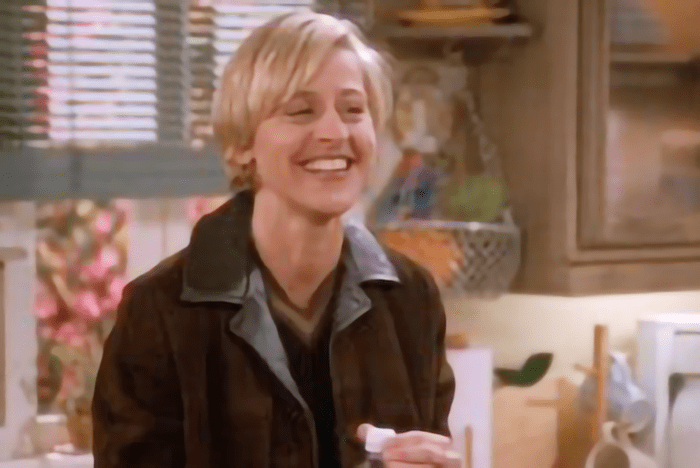 Via Vudu.com
Via Vudu.com
Ellen (1994–1998)
Although Ellen DeGeneres’s reputation took a hit thanks to a toxic-workplace scandal at her popular daytime talk show, her pop-culture legacy was minted long before that. She headlined the first prime-time sitcom, Ellen, to feature an openly gay lead character. Ellen Morgan, a neurotic bookstore owner in her 30s, came out on TV in 1997 during the two-part “Puppy Episode,” and the importance of that representation is undeniable—especially as it aired within weeks of the actress also announcing to the world that she herself was a lesbian. While LGBTQ+ movies were slightly more plentiful at the time than TV shows covering those themes, out-and-proud main characters were still a rarity in mainstream media.
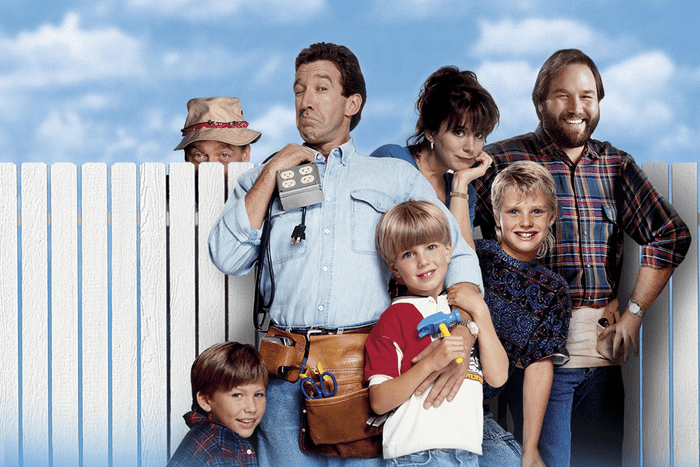 via hulu.com
via hulu.com
Home Improvement (ABC 1991–1999)
Tim Allen built his comedy career with dad jokes and dad bods long before either had slang terms to describe them on his family sitcom Home Improvement. He could build and fix anything as the host of his home-improvement show Tool Time. But when it came to being a husband and a father of three boys (one of whom was played by one of the decade’s most famous teen heartthrobs, JTT), “The Toolman” was a lot less knowledgeable and handy. He often leaned on his next-door neighbor Wilson to provide pearls of wisdom through the fence to get through familial fallout and midlife crises. Though not totally a kids show, it was fun for the whole family. And it also featured Pamela Anderson before she became a worldwide sensation in Baywatch.
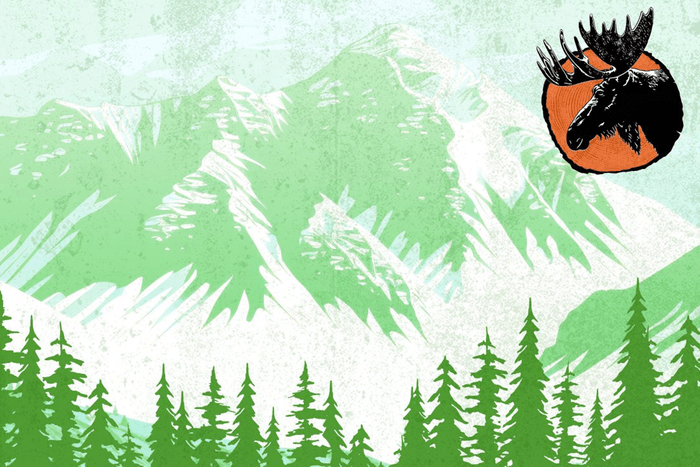 via xfinity.com
via xfinity.com
Northern Exposure (1990–1995)
Northern Exposure was a fish-out-of-water tale: A big-city, uptight and self-absorbed doctor is sent to a tiny Alaskan hamlet to practice in order to pay back his student loans from Columbia University. To say living in Cicely, Alaska, is a complete 180 from life in New York City would be a giant understatement, as the residents are eccentric, the weather freezing and the cabin living rustic.
Rob Morrow was perfectly cast as the doc/hater of the great outdoors and supported by an equally qualified troupe of thespians (Janine Turner, John Corbett, Cynthia Geary and John Cullum). Despite winning seven Emmys, being astoundingly charming and clearly influencing future quirky TV towns like Gilmore Girls‘s Stars Hollow, Schitt’s Creek or Pawnee from Parks and Recreation, it often gets lost in conversations about memorable sitcoms.
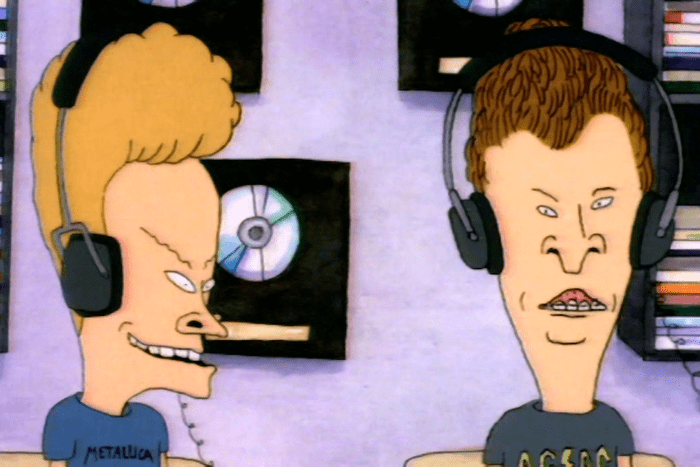 Via Pluto.tv
Via Pluto.tv
Beavis and Butt-Head (1993–2011)
One of the biggest names in animation for teens and grown-ups, Mike Judge, was responsible for Beavis and Butt-Head, a long-running, hugely popular and oft-quoted (“I am the great Cornholio!”) MTV cartoon. The show starred two sugar-buzzed teenage best friends with signature chuckles who categorize everything under either “cool” or “sucks.” They often dared each other to do stupid things with their drive-thru headsets, tools, frogs or farts.
On the surface, it was crude and at times even idiotic. But as with Judge’s later projects, King of the Hill, Office Space, Idiocracy and Silicon Valley, deeper examination reveals a smart, hilarious and scathing snapshot of a particular culture at a set moment in time. It was the bread-and-butter of the music-cable giant as MTV was undergoing a shift in brand identity—and it also contained a fair amount of heart. If the thought of this show has you laughing, here are more funny cartoons to keep your good mood going.
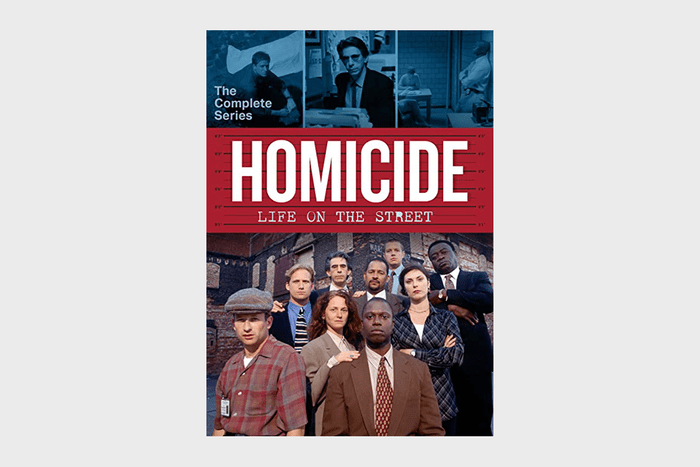 Via Amazon.com
Via Amazon.com
Homicide: Life on the Street (1993–1999)
A precursor to The Wire, Homicide: Life on the Street was based on a book written by David Simon, who started his career as a crime-beat reporter for the Baltimore Sun. Simon knew the city, the crimes, the cops and the criminals inside and out, and he gave the series a sheen of authenticity and realistic grittiness.
The NBC series emphasized character development, precinct politics, moral dilemmas and plot over chases, procedures and gunfights. It followed the detectives of Charm City’s homicide division trying to move cases off the murder board. It made Time‘s list of all-time greatest TV shows and was the first drama to win three Peabody Awards. In addition to a stellar cast that included Richard Belzer, Kyle Secor, Melissa Leo and Zeljko Ivanek, it attracted top-notch guest talent (Lily Tomlin, Vincent D’Onofrio, Alfre Woodard, Charles Durning and Anne Meara, to name a few) and scored a lead actor Emmy for Andre Braugher.
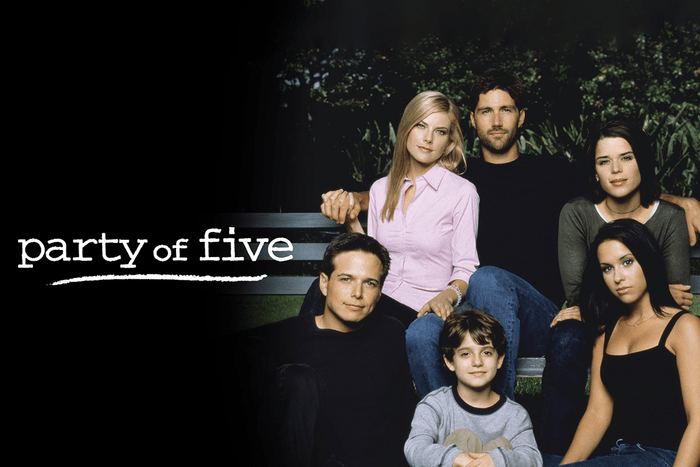 Via Apple.com
Via Apple.com
Party of Five (1994–2000)
The sad and serious story of the Salinger orphans was the polar opposite of network mate 90210‘s glossy Spelling-curated lifestyles of the rich and famous. When their parents are killed by a drunk driver, eldest brother Charlie (a pre-Lost Matthew Fox) is forced to come home and become an instant parent to Bailey (Scott Wolf), Julia (Neve Campbell), Claudia (Lacey Chabert) and infant Owen while fighting insurance companies, paying bills and dealing with his own alcoholic demons.
The other kids in the Party of Five clan dealt with their own dilemmas and depression as the years went on, seemingly hitting all the hot-button issues du jour, including date rape, peer pressure, grief, abortion, college applications and illness. It was a heavy watch, but unlike many teen TV shows, the Golden Globe winner didn’t infantilize its young audience, was conscientiously acted and was written like a prestige drama.
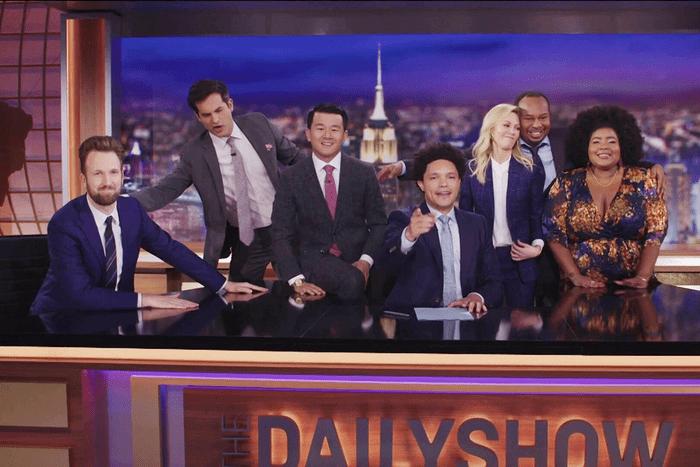 Via Cc.com
Via Cc.com
The Daily Show (1996–)
For more than a quarter of a century, this fake-news flagship show has delivered a smart, hilarious take on the news of the day and the people who made it, mainstreamed sharp political satire, helped establish fledging network Comedy Central in its infancy and breathed new life into late-night television.
Created by two women, Lizz Winstead and Madeline Smithberg, The Daily Show has continued to find the funny even as current affairs seem to grow darker and darker. They’ve seen their audience through 9/11, impeachment, insurrection, wars, climate change, the rise of conspiracy-theory politics and the pandemic—and legitimately become part of many people’s news diets. Jon Stewart started his notable run in 1999, and the other comic icons who’ve appeared on the show include Steve Carrell, John Oliver, Stephen Colbert, Samantha Bee, Josh Gad, Mo Rocca, Rob Riggle and Trevor Noah. Imagine just how different the landscape of late-night, even of American comedies in general, would look without this vital proving ground.
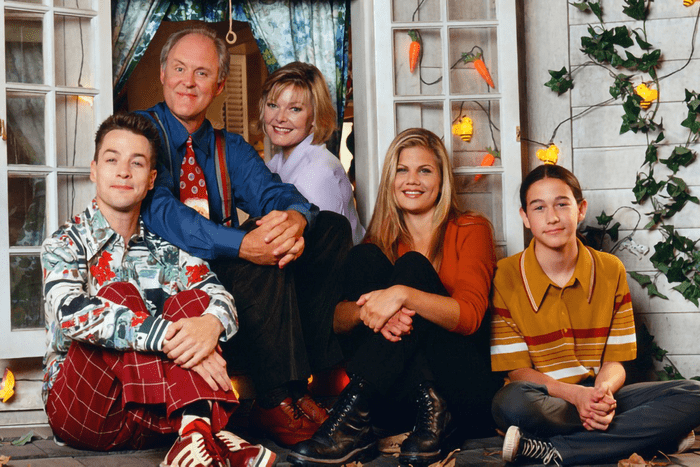 Via Apple.com
Via Apple.com
3rd Rock from the Sun (1996–2001)
3rd Rock from the Sun took a beat to find an even rhythm, but it was one of the first shows since Mork and Mindy to treat the aliens-among-us plot with a wink and a laugh track. In it, an alien expedition is sent to study humans on earth, which their commander Dick Solomon (a hilarious John Lithgow) believes is the least important planet.
Posing as a family were Dick, Harry, Sally and Tommy—who was actually the eldest of the group but was stuck in a teen body. The show was created by SNL vets Bonnie and Terry Turner as “Carl Sagan meets the Marx Brothers.” It also went on to win eight Emmys, mostly personal wins for Lithgow and raspy-voiced newbie Kristen Johnston. It was also most folks’ introduction to then-teenaged Joseph Gordon-Levitt, who has gone on to star in numerous high-profile sci-fi movies and become one of the most consistent actors working today.
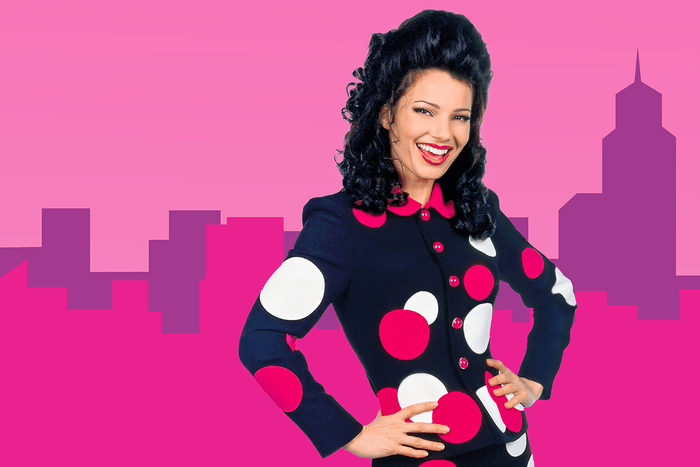 via hbomax.com
via hbomax.com
The Nanny (CBS 1993–1999)
Fran Drescher’s wardrobe and thick NYC accent struck a cord with Americans everywhere. The Nanny kicked off when a cosmetics saleswoman from Queens appeared on the doorstep of a wealthy widower with her big coiffure and no-nonsense, tough-love logic. Fran Fine unexpectedly lands a job as a nanny to the three Sheffield children: Maggie, Brighton and Grace, alongside sarcastic English butler Niles. Despite her distinctive voice, Drescher grew on audiences as much as her character grew on the family she helped make whole again, ultimately marrying her employer.
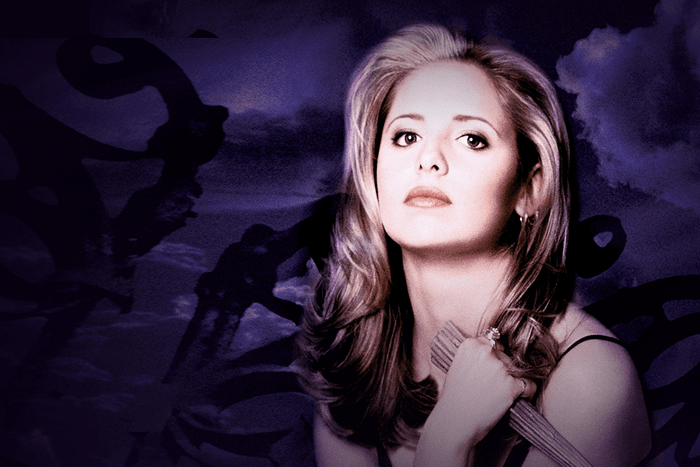 Via Hulu.com
Via Hulu.com
Buffy the Vampire Slayer (1997–2003)
Deftly combining genre storytelling, teenage culture and melodrama, and rapid-fire witty banter, Buffy quickly and easily became the first success story of then-new network The WB (now the CW). Buffy (Sarah Michelle Gellar) and the Scooby gang (Alyson Hannigan, Nicholas Brendan, Seth Green and Charisma Carpenter) saved the world … a lot. And they did it while attending a hellish (literally and figuratively) high school and dealing with brooding boys, confused sexual identities, raging hormones, petty frenemies and parents that just don’t understand.
It also changed the game in so many ways, from using a very special musical episode to deal with heavy subject matter to giving their teens unapologetically smart, snappy and mature dialogue that didn’t underestimate the audience’s intelligence. If you were a lover of this show, you may also enjoy these vampire movies.
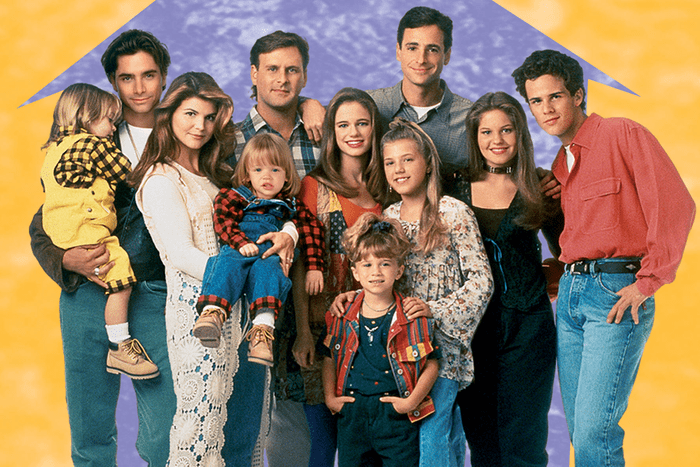 Via Hulu.com
Via Hulu.com
Full House (1987–1995)
Even foodies have to admit that eating gourmet meals night after night gets old eventually, and sometimes you just want a grilled cheese or slice of pizza. The same goes for watching TV with comforting storylines. That’s where comfort food ’90s kids show Full House comes in. It’s the story of widowed Danny Tanner (the late-great Bob Saget) trying to raise his three young daughters in San Francisco, with the help of his rocking brother-in-law (John Stamos) and his silly pal Joey (Dave Coulier).
The show was wholesome and corny, but life is a slog and sometimes those are the exact emotional notes you need. It was also responsible for the meteoric rise of the powerhouse duo known as the Olsen Twins—which is mostly forgiven by anyone who tuned in sheerly to enjoy Uncle Jesse’s hunkiness. Nostalgia motivated the 2016 Netflix comeback, Fuller House, in which the OG sisters (minus Mary Kate or Ashley) return to their childhood home with kids of their own.
Honorable Mention:
- Living Single
- Boy Meets World
- Gina
- Everybody Loves Raymond
- Family Matters
- Saved by the Bell
- Will and Grace
- News Radio
- Sabrina the Teenage Witch
More from Movies & TV:

